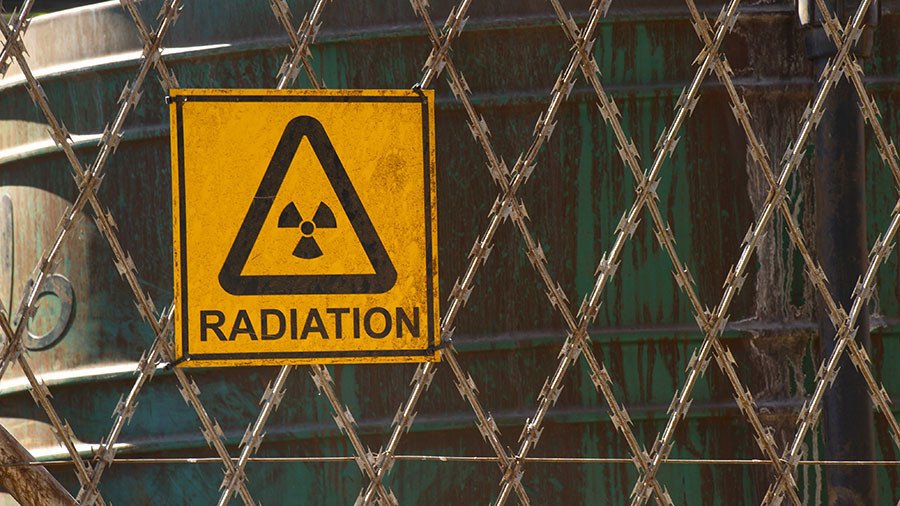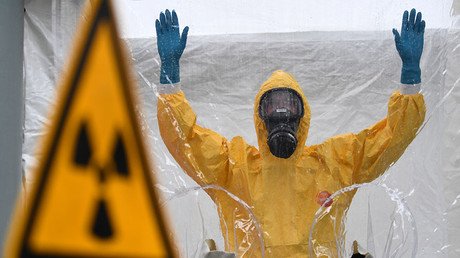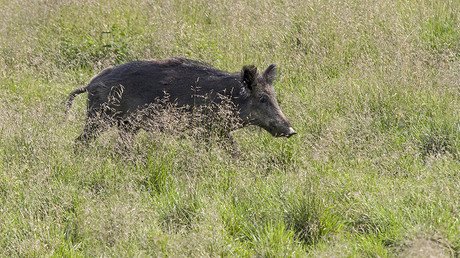Officials confirm ‘high pollution’ after spike in radioactivity in Urals, say no health risk

The Russian meteorological service confirmed “extremely high pollution” in the Urals in October after a spike in radioactive isotope ruthenium-106 levels. There is no health risk for the local population, authorities stressed.
“Probes of radioactive aerosols from monitoring stations in Argayash and Novogorny [villages in Russia’s Chelyabinsk Region in the Urals] contained radioisotope Ru-106” in the period between September 25 and October 1, Russia’s meteorological service, Rosgidromet, said in a statement.
Argayash experienced “extremely high pollution” after Ru-106 exceeded natural background pollution from the previous month by 986 times. The respective levels for Novogorny were 440 times higher.
Ruthenium-106 is an isotope used in radiotherapy for eye tumors and for treatment of uveal melanoma, according to data from the Isotope group, a Rosatom affiliate.
However, the amount of the isotope does not exceed the maximum allowed concentration, Rosgidromet head Maxim Yakovenko said, adding that there is “no hazard” for the local population. The same concentration of Ru-106 was recorded in Bulgaria, Poland, Ukraine, and Romania, he said.
Earlier in November, French nuclear safety institute IRSN said that the concentration levels of Ru-106 “in the air that have been recorded in Europe and especially in France are of no consequence for human health and for the environment.”
Russian consumer rights agency Rospotrebnadzor pointed out that the level of ruthenium in the air in Russia is 200 times lower than allowed.
The ministry of natural resources and environment said it is perplexed by the position of “a public organization, which incompetent assessments” led to the spread of “inauthentic information in the media.” The ministry did notreveal the name of this “organization,” but on Monday, Greenpeace Russia called upon Rosatom to open “a thorough investigation about the incidents at Mayak.”
Both Argayash and Novogorn villages, where the high levels of Ru-106 were detected, are located in close proximity (23km and 7km respectively) to the Mayak Production Association, one of the biggest nuclear facilities in Russia. It houses a reprocessing plant and a plutonium production site. Rosgidromet, however, does not mention Mayak, which is owned by Rosatom nuclear power company, in its report.
Mayak’s press service denied being a source of the pollution in the Urals, saying that the company did not work with Ru-106 in 2017, TASS reported. According to Ilya Yarmoshenko, an official from the Ural Branch of Russian Academy of Sciences, the spike does not present any health hazards for the population.
“In terms of radiation safety, the effect of Ru-106 [announced by Rosgidromet] is safe for people… Of course, evacuation of the [local] population in this case is not necessary,” he told RIA Novosti.
The data on Rosgidromet does not indicate a hazardous situation for people, it only shows “a surge in radiation level” in the region which is not a threat for the local population, Evgeny Savchenko, a public security official in Chelyabinsk Region, told Interfax.
The Mayak plant was the site of the Kyshtym disaster in 1957. A malfunction in the reprocessing plant led to a blast that contaminated 20,000 sq. km. The tragedy was measured as a Level 6 disaster or ‘serious accident’ on the International Nuclear Event Scale (INES). This made the Kyshtym disaster the third-most serious nuclear disaster, behind the Fukushima and the Chernobyl accidents.















